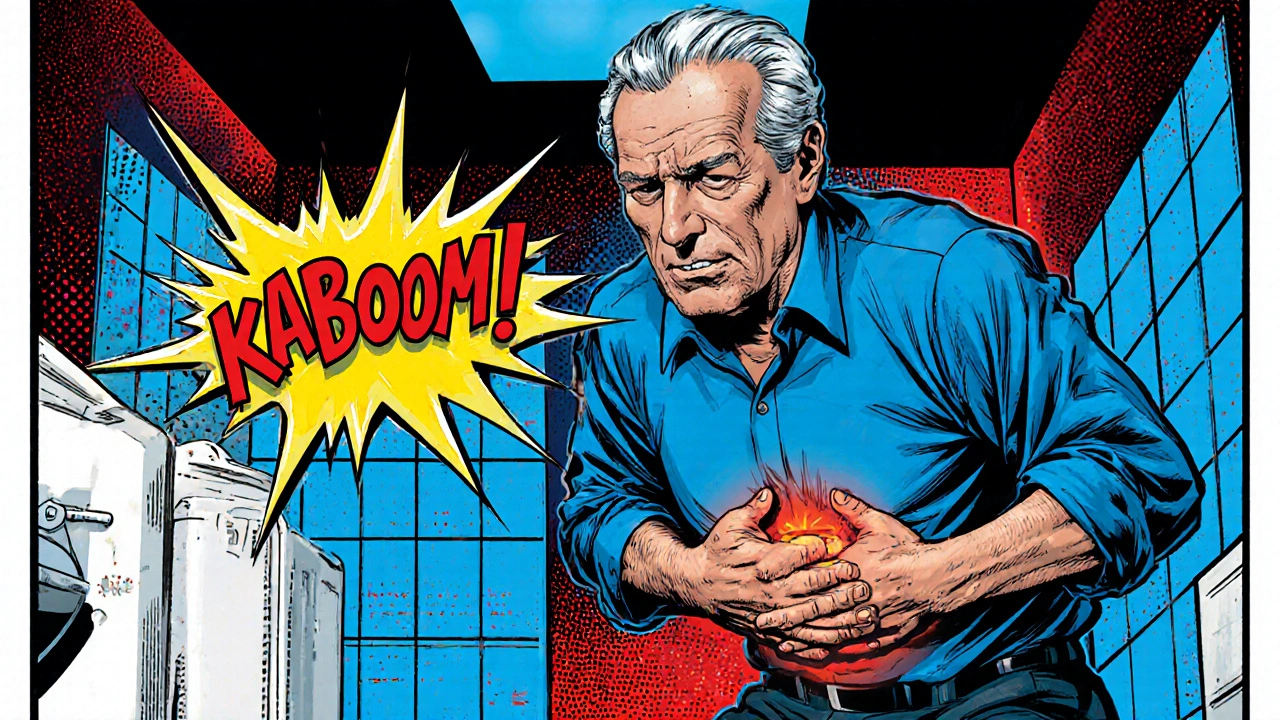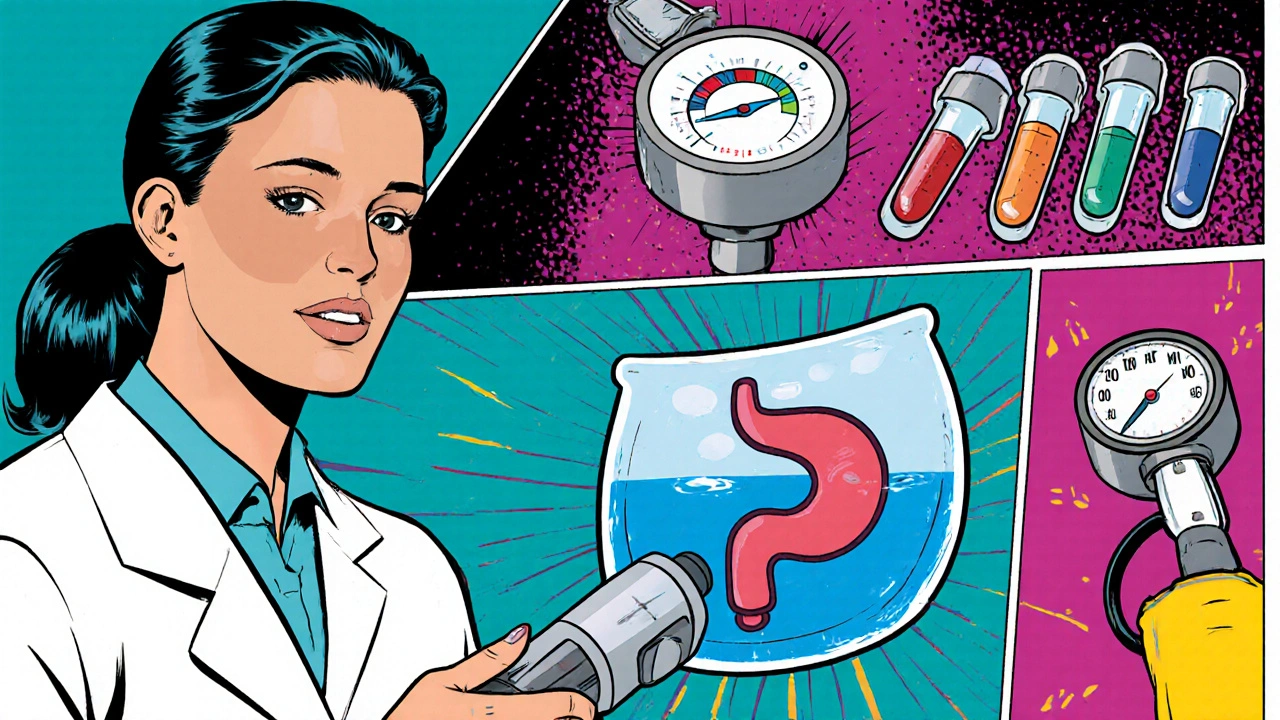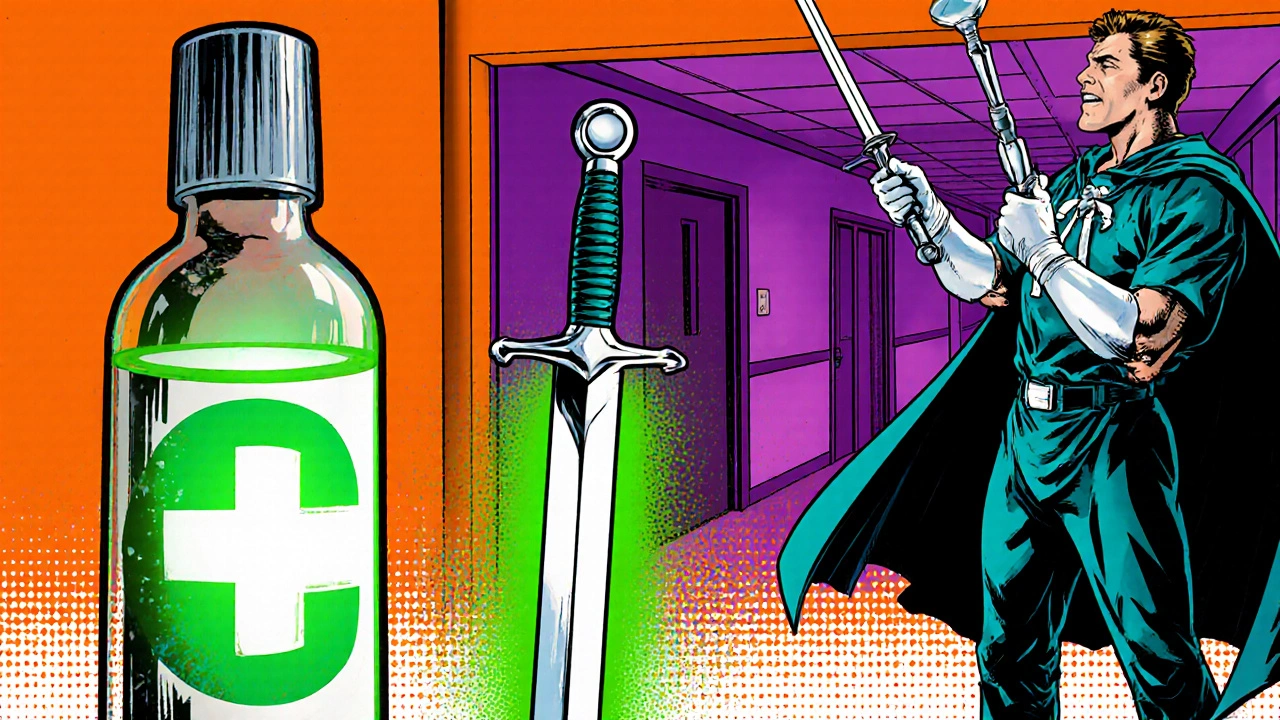
This tool helps determine if your symptoms require immediate medical attention based on the article's emergency criteria.
Your symptoms match acute urinary retention criteria. Seek immediate medical care at the nearest urgent-care center or emergency room.
While not an immediate emergency, these symptoms warrant medical consultation within 24 hours. Contact your healthcare provider for further evaluation.
Note: This tool is for informational purposes only and does not replace professional medical advice. Always consult a healthcare provider for diagnosis and treatment.
Imagine needing to use the bathroom and nothing comes out - that sudden, uncomfortable blockage is what many people first notice as urinary retention. It’s not just an inconvenience; it can signal a serious underlying issue that needs prompt attention.
Urinary Retention is a condition where the bladder cannot empty completely or at all, despite a normal urge to urinate. The problem may be temporary (acute) or develop slowly over months (chronic). Both forms can lead to bladder damage, kidney problems, or infection if left untreated.
Several factors can block the flow of urine or disrupt the nerves that control the bladder:
Spotting the warning signs early can prevent complications:

Diagnosis starts with a detailed history and physical exam, followed by tests that reveal how much urine is left in the bladder after voiding. Common investigations include:
Management depends on the cause, severity, and whether the retention is acute or chronic. Below is a quick comparison of the most common approaches:
| Option | How It Works | Best For | Potential Drawbacks |
|---|---|---|---|
| Medication (alpha‑blockers, 5‑alpha‑reductase inhibitors) | Relaxes prostate or bladder neck muscles | Benign prostate enlargement, mild neurogenic causes | Dizziness, sexual side‑effects, may take weeks to work |
| Intermittent Catheterization | Periodically drains bladder using a thin catheter | Chronic retention where bladder cannot empty on its own | Risk of infection, requires training |
| Indwelling Urinary Catheter | Permanent tube left in place to continuously drain urine | Acute emergencies, post‑surgery | Higher infection risk, discomfort |
| Surgical Intervention (TURP, bladder neck incision) | Physically removes or widens blockage | Severe prostate enlargement, refractory strictures | Bleeding, anesthesia risks, recovery time |
Doctors often start with the least invasive option and move toward surgery only if symptoms persist.
If you’re dealing with chronic retention, these practical steps can keep you comfortable and reduce infection risk:

Acute retention is a medical emergency. Head to the nearest urgent‑care centre if you experience any of the following:
Prompt catheter placement can relieve pressure and protect the kidneys.
Yes, many cases improve with medication, lifestyle changes, or minimally invasive procedures. The success rate depends on the underlying cause and how early treatment begins.
Acetaminophen is generally safe, but NSAIDs can worsen kidney function if retention has already impacted the kidneys. Always check with a clinician before regular use.
A partial blockage or weak bladder muscles can cause intermittent flow. Common sources include an enlarged prostate or a urethral stricture.
Intermittent self‑catheterization is often recommended because it reduces infection risk compared to a permanently indwelling catheter. Your doctor will decide based on bladder capacity and hygiene ability.
Staying hydrated, limiting bladder irritants, practicing timed voiding, and maintaining a healthy weight can lessen pressure on the urinary tract and improve symptoms.
Urinary retention is a painful surprise you don’t want.
Staying hydrated but cutting back on coffee and booze is a solid first step.
Timed voiding can train the bladder to empty more completely.
Even a simple bladder diary helps you spot patterns you wouldn’t otherwise notice.
And don’t forget to discuss any new meds with your doctor – even over‑the‑counter stuff can throw things off.
From a urodynamic perspective, detrusor underactivity and urethral compliance are pivotal.
Neurogenic etiologies often manifest as dyssynergic sphincter activity, compromising voiding efficiency.
Imaging modalities like MRI can delineate obstructive lesions with high resolution.
Pharmacologic alpha‑blockade reduces outlet resistance, but response varies with receptor density.
Ultimately, tailoring therapy to the precise pathophysiology yields optimal outcomes.
If you ignore the warning signs, you risk kidney damage that’s hard to reverse.
Early catheterization in acute cases buys time while you sort out the underlying cause.
That’s why a prompt urology referral isn’t just a suggestion – it’s essential care.
Honestly, all these guidelines feel like a maze designed to keep patients confused.
Every doctor I’ve seen seems to have a different “best” treatment, from meds to surgery, and none of them really fix the problem long‑term.
The whole “start low, go slow” mantra just delays the inevitable need for a catheter.
It’s almost as if the medical industry thrives on keeping us perpetually dependent.
Sure, lifestyle tweaks help a little, but they’re not a cure.
What’s really missing is a clear, decisive protocol that actually restores normal bladder function.
Keep moving and stay positive – small changes add up!
A balanced diet, regular walks, and simple pelvic floor exercises can make a real difference over weeks.
You’ve got this.
While the article is comprehensive, it overlooks the psychosocial impact of chronic retention on patients’ quality of life.
Oh, so the whole medical establishment is conspiring against you? That’s a fresh take on bladder health.
Drama aside, the truth is that many patients feel trapped by endless appointments and never‑ending prescriptions, and that frustration fuels the whole “conspiracy” vibe.
Quick tip: if you’re on antihistamines for allergies, try switching to a non‑sedating formula – it can ease bladder muscle tension.
Also, a warm shower before bedtime sometimes helps the bladder relax.
When you first encounter the term “urinary retention,” it’s easy to think of it as a mere inconvenience, a fleeting hiccup that will resolve on its own.
Yet, beneath that surface lies a cascade of physiological disturbances that can silently erode kidney function, compromise pelvic health, and sap one’s confidence in everyday activities.
Consider the bladder as a reservoir that, when chronically overfilled, stretches its muscular walls, diminishing detrusor contractility over time.
This progressive weakening makes each subsequent voiding attempt more laborious, creating a vicious feedback loop.
Moreover, the stagnant urine serves as a breeding ground for bacteria, heightening the risk of recurrent urinary tract infections that can further inflame the urothelium.
Patients often report a subtle sense of fullness, a low‑grade ache that they dismiss as “just a bloated stomach,” until the pain crescendoes into acute retention demanding emergency catheterization.
In that critical moment, the urgency is palpable, the abdomen is distended, and the fear of permanent damage looms large.
Medical imaging can reveal hidden obstructive lesions – be they a prostate adenoma, a stricture, or a calculi lodged at the bladder neck – each demanding a tailored therapeutic approach.
Pharmacologic agents like alpha‑blockers may provide relief, but they are merely a bridge, not a definitive solution for many.
Surgical interventions, while invasive, often restore patency and allow the bladder to recover its natural compliance, yet they carry their own set of risks and recovery timelines.
Crucially, patient education on timed voiding, adequate hydration, and avoidance of bladder irritants cannot be overstated; these lifestyle pillars underpin any successful long‑term management plan.
In sum, urinary retention is not a trivial footnote in urology; it is a multifaceted condition that warrants early recognition, comprehensive evaluation, and a balanced blend of medical, procedural, and self‑care strategies.
Only through such an integrated approach can we hope to preserve renal health and restore a quality of life unburdened by constant bathroom anxiety.
Nice rundown, but if you’re already overloaded with info, just remember: stay hydrated, talk to your doc, and don’t ignore the pain.
For anyone unsure about post‑void residual measurements, a bedside ultrasound probe usually gives an estimate within a few milliliters.
That’s a quick, non‑invasive way to gauge how much urine is left and decide if further testing is needed.
Although the piece covers the clinical spectrum adequately, it fails to address the disparities in access to catheter supplies for low‑income patients, which is a significant oversight.
Honestly, when I first read about urinary retention, I thought it was just an old man’s problem, something you get after a few beers and a good dinner.
But then I realized that the nervous system, the prostate, even the medications you take for allergies can all conspire to make your bladder act like a stubborn boulder.
In my own experience, switching off a nighttime antihistamine helped my flow a lot, and I started doing simple pelvic floor squeezes while watching TV.
It sounds silly, but the consistency mattered – every evening I’d do three sets of ten squeezes, and over a month I felt less urgency and more confidence that I could finally empty my bladder.
Also, learning to keep a bladder diary wasn’t just a suggestion; it revealed that I was actually drinking too much coffee after lunch, which was irritating the bladder muscles.
So I cut down, swapped for water, and the whole situation improved dramatically.
Bottom line: it’s not just a “man’s issue” – anyone can run into it, and a few practical tweaks can go a long way.